Several decades ago pharmaceuticals were detected in the aquatic environment for the first time. Since then, our consumption and technological abilities have increased, and nowadays many are found globally in surface waters, ground waters, even drinking waters. Although concentrations are low, adverse effects are not unlikely considering their specific modes of action and high potency.
Unsurprisingly, environmental and human health concerns have spurred a substantial amount of scientific work on the topic. What is our current state of knowledge? How can we prioritize our efforts? These questions and more will be answered in this introduction on environmental exposure to pharmaceuticals.
 Rik Oldenkamp is a promising young scientist active in the field of environmental science, who recently received his PhD on environmental risk assessment of pharmaceuticals with the cum laude predicate.
Rik Oldenkamp is a promising young scientist active in the field of environmental science, who recently received his PhD on environmental risk assessment of pharmaceuticals with the cum laude predicate.
His continuing research at Radboud University Nijmegen is devoted to the development, evaluation and application of predictive models to assess the environmental and human health impacts of chemicals. He does this by integrating concepts, methods and data from various scientific disciplines, such as environmental chemistry, (eco)toxicology, statistics, and mathematical modeling.
In this talk I will present the concept of subMIC selection of antibiotic resistance and illustrate it with our studies of how low antibiotic concentrations can selectively enrich for novel resistance mutations, pre-existing plasmid-borne resistance and discuss how likely this is to happen in environments contaminated with low levels of antibiotics, such as waste-water.
Two publications central to the talk:
 Linus Sandegren, Ph.D. is a molecular biologist/bacteriologist with a special interest in mobile genetic elements and antibiotic resistance evolution. He is an active and well known teacher at the medical, biomedical and pharmacist programs at Uppsala University and member of the management group of Uppsala Antibiotic Center since the start.
Linus Sandegren, Ph.D. is a molecular biologist/bacteriologist with a special interest in mobile genetic elements and antibiotic resistance evolution. He is an active and well known teacher at the medical, biomedical and pharmacist programs at Uppsala University and member of the management group of Uppsala Antibiotic Center since the start.
Two themes of his research are fundamental aspects of how resistant bacteria evolve over time during antibiotic treatment in patients and hospital settings and how resistance plasmids are maintained and disseminated and serve as platforms for evolution of antibiotic resistance. The main focus is to understand how factors such as stability, mobility, positive selection and fitness costs influence the evolutionary success of resistant bacteria.
In the last decade, several studies have demonstrated trace amounts of pharmaceuticals waters and soil. Generally, levels are considered to be too low to cause any adverse effects. However, some pharmaceuticals are known to interfere with the endocrine system, which can already occur at low levels. These effects are often overlooked. Besides the endocrine-active pharmaceuticals, such as the birth control pill and hormone-replacement therapies, also some antidepressants, beta-blockers, and non-steroidal anti-inflammatory drugs have been shown to display endocrine activity. This lecture will focus on endocrine-active pharmaceuticals in the environment, their (combined) effects and potential risk.
 Majorie van Duursen, Ph.D. is toxicologist at the Institute for Risk Assessment Sciences at the Utrecht University. She strives for a healthy environment for future generations via education and research. Her research focuses on the potential health effects of environmental contaminants, especially endocrine disrupting chemicals, on reproduction and the developing child. Majorie is involved in several (inter)national scientific, societal and political networks aimed to encourage healthy living from an early life.
Majorie van Duursen, Ph.D. is toxicologist at the Institute for Risk Assessment Sciences at the Utrecht University. She strives for a healthy environment for future generations via education and research. Her research focuses on the potential health effects of environmental contaminants, especially endocrine disrupting chemicals, on reproduction and the developing child. Majorie is involved in several (inter)national scientific, societal and political networks aimed to encourage healthy living from an early life.
In my PhD dissertation I hypothesized that psychoactive pharmaceuticals from drinking water could cross maternal biological barriers, and alter in vitro neuronal protein and gene expression associated with Autism Spectrum Disorders (ASD).
The project combined observational and experimental in vitro and in vivo animal studies to elucidate the cell biology and physiological effects of psychoactive pharmaceuticals in the etiology of idiopathic autism.
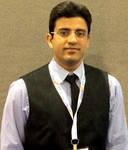 Gaurav Kaushik is a biologist with a blend of cell biology, toxicology, stem-cell biology, bioinformatics and physiological skills. He is currently working as a postdoctoral researcher at the University of Wisconsin, Madison. He is optimizing conditions to create 3-dimensional vascularized neural organoids using iPSC/Embryonic stem cell-derived cell lines in a synthetic microenvironment on a microfluidics plate (Brain-on-a-chip model) for the toxicology screening purposes.
Gaurav Kaushik is a biologist with a blend of cell biology, toxicology, stem-cell biology, bioinformatics and physiological skills. He is currently working as a postdoctoral researcher at the University of Wisconsin, Madison. He is optimizing conditions to create 3-dimensional vascularized neural organoids using iPSC/Embryonic stem cell-derived cell lines in a synthetic microenvironment on a microfluidics plate (Brain-on-a-chip model) for the toxicology screening purposes.
During his Ph.D. at Idaho State University, he explored the potential association of psychoactive pharmaceuticals in drinking water with Autism Spectrum Disorders (ASD).
The production and use of pharmaceuticals can involve significant environmental impacts. We suggest a set of short-, medium- and long-term measures in order to reduce the presence of human and veterinary pharmaceuticals in the environment. Results from more than 15 recent projects are summarized, e.g., aiming to
 Maximilian Hempel received his PhD at the Technical University of Hamburg-Harburg on Mercury in the Environment. From 1990 to 1996 he worked at the Institute for Chemistry of the Helmholtz Centre Geesthacht. Since 2002, he is working for the German Federal Environmental Foundation (DBU). He is in charge of the Department of Environmental Chemistry and the project group Resource Efficiency.
Maximilian Hempel received his PhD at the Technical University of Hamburg-Harburg on Mercury in the Environment. From 1990 to 1996 he worked at the Institute for Chemistry of the Helmholtz Centre Geesthacht. Since 2002, he is working for the German Federal Environmental Foundation (DBU). He is in charge of the Department of Environmental Chemistry and the project group Resource Efficiency.
His main fields of interest are green and sustainable chemistry and pharmacy as well as innovation management. He is member of the board of the GDCh-working group “Sustainable Chemistry”. He edited 5 books and published more than 30 peer-reviewed papers.
Pharmaceuticals in the environment is a hot topic since more than two decades. Taking into consideration to the number of parent compounds as well as the often unknown transformation products generated in advanced effluent new approaches are needed.
Pharmaceuticals that are designed form the very beginning for fast and complete mineralization after their introduction into the environment offer to surmount these limitations and offer a sustainable solution that is working including developing countries that do not have advanced effluent treatment.
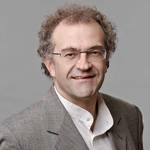 Klaus Kümmerer's research includes Sustainable Pharmacy as well as Aquatic Environmental Chemistry. He was one of the first studying pharmaceuticals in the environment in the 1990s. He has published extensively on these topics in leading scientific journals and books, e.g. „Pharmaceuticals in the Environment“ 3rd Ed, "Green and Sustainable Pharmacy” (with M Hempel), "Advanced Treatment Technologies for Urban Waste Water Reuse" (with D Fatta-Kassinos, D Dionysiou).
Klaus Kümmerer's research includes Sustainable Pharmacy as well as Aquatic Environmental Chemistry. He was one of the first studying pharmaceuticals in the environment in the 1990s. He has published extensively on these topics in leading scientific journals and books, e.g. „Pharmaceuticals in the Environment“ 3rd Ed, "Green and Sustainable Pharmacy” (with M Hempel), "Advanced Treatment Technologies for Urban Waste Water Reuse" (with D Fatta-Kassinos, D Dionysiou).
He is founding editor of the scientific journal Sustainable Chemistry and Pharmacy, as well as associate editor of Chemosphere and Environmental Pollution. For his work on pharmaceuticals in the environment and benign by design he received several awards. His work was featured in many international scientific journals, newspapers, and TV. Klaus Kümmerer advises UNEP and WHO.
The presentation will focus on the dominant role of intestinal alkaline phosphatase in the protection of gut health, in the detoxification of bacterial endotoxins, in the maintenance of the intestinal barrier system, in the prevention of small intestinal bacterial overgrowth, in the regulation of the protective surface microclimate pH, in the inactivation of inflammation triggering moieties and in the maintenance of the intestinal microbial ecosystem.
The maintenance of gut health will be a key factor in the reduction of antibiotic use in animal husbandry and in the prevention of type 2 diabetes in man.
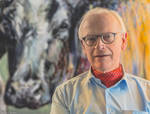 Willem Seinen studied veterinary medicine, started his career in experimental animal pathology, performed his PhD in immune-toxicology and got a chair in biological toxicology at the Utrecht University in 1984. There he founded the Research Institute of Toxicology, the predecessor of IRAS (Institute for Risk Assessment Sciences).
Willem Seinen studied veterinary medicine, started his career in experimental animal pathology, performed his PhD in immune-toxicology and got a chair in biological toxicology at the Utrecht University in 1984. There he founded the Research Institute of Toxicology, the predecessor of IRAS (Institute for Risk Assessment Sciences).
After his retirement Willem Seinen joined the biotech company Alloksys, started by one of his former students, Ruud Brands and together they founded AMRIF, a company developing alkaline phosphatase (RESCAP®) for treatment of (chronic) inflammatory diseases. Nowadays he is engaged in the development of medicines for prevention and treatment of inflammatory diseases.
Associating therapeutics to nanoparticles can improve their activity. For certain therapeutics, it is even a prerequisite for activity. Without the delivery system, these therapeutics do not gain access to the site of activity. One such class of therapeutics are the nucleic acids. Nucleic acids are attractive because they are endogenous molecules that allow therapeutic intervention in a nearly unlimited number of ways. The difficulty in using them is that they are too large and too charged to reach the interior of the target cell by themselves, they need a nanoparticle to bring them to the appropriate organelle.
From an environmental perspective, the difficulties in their tissue transport may be a blessing in disguise. Since nucleic acids cannot leave the body until they are degraded or inactivated, this next generation of therapeutics may also contribute to sustainable pharmacy.
 Raymond Schiffelers is professor of nanomedicine at the UMC Utrecht. He focuses on synthetic and natural nanoparticles to improve diagnosis and therapy.
Raymond Schiffelers is professor of nanomedicine at the UMC Utrecht. He focuses on synthetic and natural nanoparticles to improve diagnosis and therapy.
The work in the lab spans fundamental investigations on next generation therapeutics and nanoparticles up to the final stages of nanomedicine development before first-in-man studies. One invention, OncoCort, is currently in Phase I clinical trials.
Besides making basic compounds that are necessary for growth and reproduction, plants are also able to synthesize a staggering amount of other biologically active compounds. Many of these so-called secondary plant metabolites are not only very commonly used for e.g. their pleasant taste or scent, but also for their wide-ranged pharmacological properties in both humans as well as animals.
This presentation focuses on the role of secondary metabolites in plants and the possibilities for alternative use of these interesting metabolites and will also discuss ‘green strategies’ to enhance concentrations of useful active metabolites in plants.
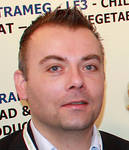 Edwin van den Worm received his PhD in pharmacognosy from Utrecht University in 2001 upon completion of his dissertation entitled “Investigations on apocynin, a potent NADPH oxidase inhibitor”. Until 2007 he was working as a postdoctoral researcher at several different departments of Utrecht University.
Edwin van den Worm received his PhD in pharmacognosy from Utrecht University in 2001 upon completion of his dissertation entitled “Investigations on apocynin, a potent NADPH oxidase inhibitor”. Until 2007 he was working as a postdoctoral researcher at several different departments of Utrecht University.
From 2008 he is employed as a university teacher at the department of Pharmaceutical Sciences at Utrecht University. Besides teaching, he also works as a senior scientist at PhytoGeniX BV, a Dutch contract research company specialized in research and development of phytomedicines and phytogenic drugs. This combination of education and research significantly widens his focus and fields of interest.
Medicines are widely used and make an important contribution to the health of individuals and the population. A socially undesirable side-effect of medicine use is the environmental impact caused by the excretion of medicines via urine and faeces by medicine users, and the waste disposal of medicines that have been dispensed but not used.
In my contribution, I will focus on the extent of the problem of unused medicines in the Netherlands and discuss various solutions.
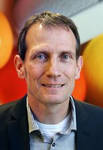 Toine Egberts (1965) obtained his PharmD in 1990 at the University of Groningen, the Netherlands. Thereafter he was trained as a clinical pharmacist during four years in the hospitals of Tilburg and Delft. In 1997 he defended his PhD thesis entitled 'Pharmacoepidemiologic approaches to the evaluation of antidepressant drugs'. During his PhD-project he obtained the Master of Science degree in clinical epidemiology at the Netherlands Institute of Health Sciences.
Toine Egberts (1965) obtained his PharmD in 1990 at the University of Groningen, the Netherlands. Thereafter he was trained as a clinical pharmacist during four years in the hospitals of Tilburg and Delft. In 1997 he defended his PhD thesis entitled 'Pharmacoepidemiologic approaches to the evaluation of antidepressant drugs'. During his PhD-project he obtained the Master of Science degree in clinical epidemiology at the Netherlands Institute of Health Sciences.
He was appointed in 2001 as professor of clinical pharmacoepidemiology at the department of Pharmacoepidemiology & Clinical Pharmacology. In 2006 he became the chief pharmacist of the department of clinical pharmacy of the University Medical Center Utrecht and a professor of clinical pharmacy. He is (co)author of over 400 international peer reviewed scientific publications and a reviewer for several scientific journals.
The International Society of Drug Bulletins (ISDB) is a world-wide network of bulletins and journals on drugs and therapeutics that are financially and intellectually independent of pharmaceutical industry. It tries to implement and promote rational pharmacotherapy, which may be regarded as the practical application of the principles of evidence-based medicine.
Rational pharmacotherapy can be defined as prescribing the right medication to individual patients or populations, at the time when it is needed, using a dosage scheme that corresponds to the most suitable profile in terms of efficacy, side-effects and costs. It will be illustrated that most of the current guidelines on drug therapy cannot be regarded as rational.
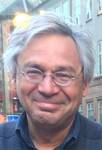 Dick Bijl studied medicine at the University of Utrecht. After his vocational trainee in general practice he worked in the Dutch Asthma Centre Davos, Switzerland. Returning to the Netherlands he worked as general practitioner and in scientific work. From 1995 through 1996 he did an additional training in epidemiology, with special interest in pharmaco-epidemiology and clinical trials.
Dick Bijl studied medicine at the University of Utrecht. After his vocational trainee in general practice he worked in the Dutch Asthma Centre Davos, Switzerland. Returning to the Netherlands he worked as general practitioner and in scientific work. From 1995 through 1996 he did an additional training in epidemiology, with special interest in pharmaco-epidemiology and clinical trials.
In 1995 he joined the Geneesmiddelenbulletin (Dutch Drug Bulletin) as editor and in 2005 was appointed chief editor, a job he performed until June 2017. In 2016 he was elected as president of the International Society of Drug Bulletins (ISDB).